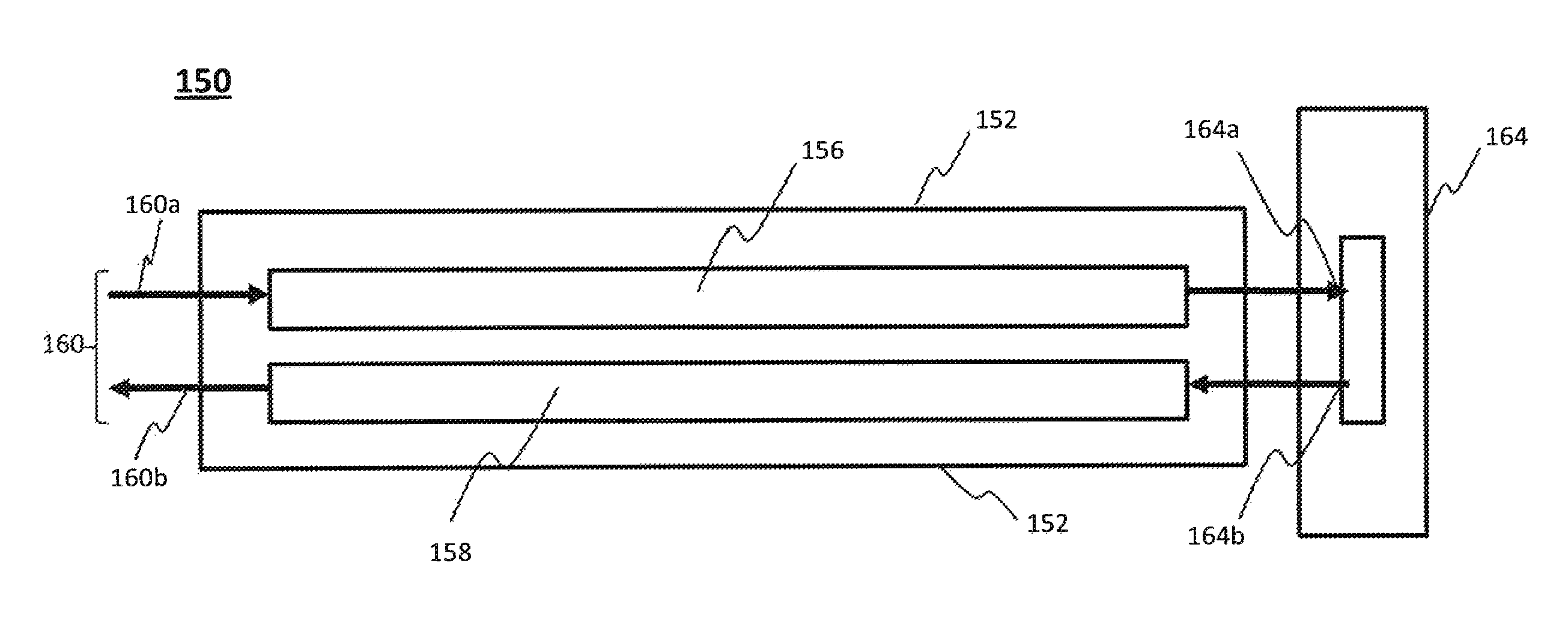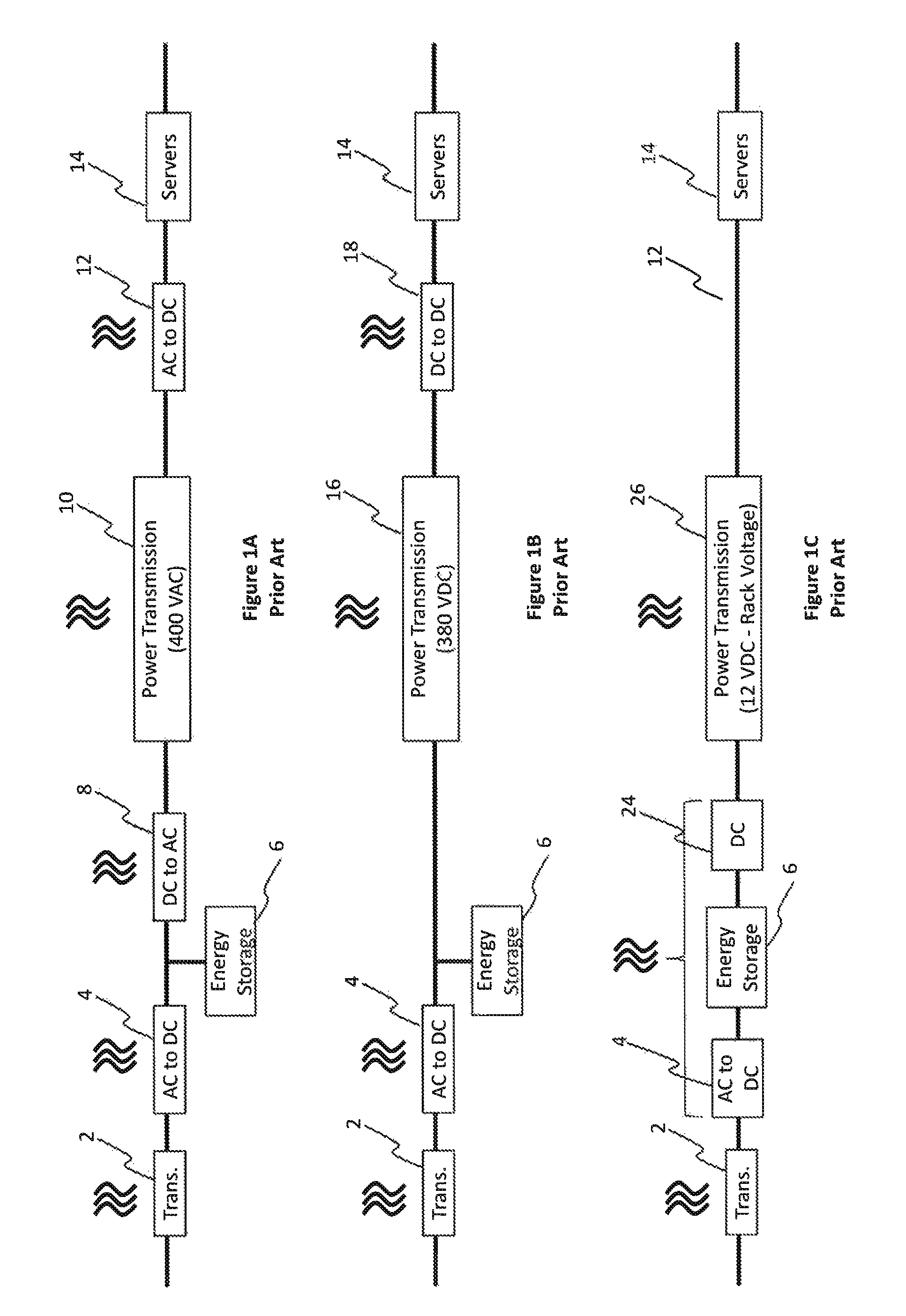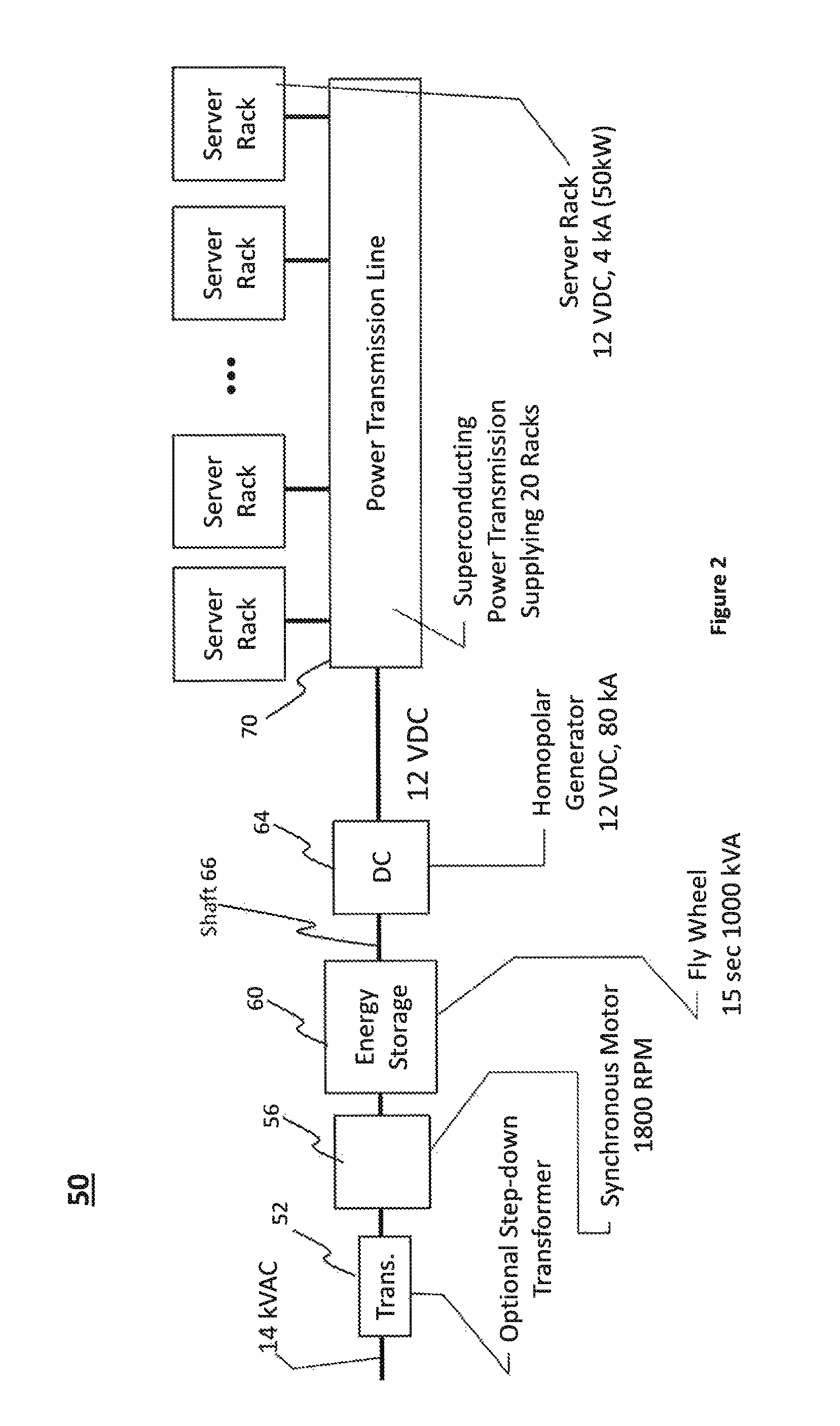Power transmission systems and components for direct current applications
a technology of power transmission system and components, applied in transmission systems, ac/dc convertors, mechanical energy handling, etc., can solve the problems of consuming megawatts of power, reducing operation efficiency, and increasing cost and reducing operation efficiency
- Summary
- Abstract
- Description
- Claims
- Application Information
AI Technical Summary
Benefits of technology
Problems solved by technology
Method used
Image
Examples
Embodiment Construction
[0032]Before describing in detail exemplary systems and methods relating to the invention, it should be observed that the present invention resides primarily in a novel and non-obvious combination of elements and method steps. So as not to obscure the disclosure with details that will be readily apparent to those skilled in the art, certain conventional elements and steps have been presented with lesser detail, while the drawings and the specification describe in greater detail other elements and steps pertinent to understanding the invention. Also, the following embodiments are exemplary constructions which do not define limits as to structural arrangements or methods according to the invention. The embodiments are permissive rather than mandatory and are illustrative rather than exhaustive.
1. AC-DC and DC-DC Conversion with Built-in Energy Storage
[0033]FIG. 2 illustrates a power distribution system 50 according to an embodiment of the invention. In lieu of incorporating multiple c...
PUM
 Login to View More
Login to View More Abstract
Description
Claims
Application Information
 Login to View More
Login to View More - R&D
- Intellectual Property
- Life Sciences
- Materials
- Tech Scout
- Unparalleled Data Quality
- Higher Quality Content
- 60% Fewer Hallucinations
Browse by: Latest US Patents, China's latest patents, Technical Efficacy Thesaurus, Application Domain, Technology Topic, Popular Technical Reports.
© 2025 PatSnap. All rights reserved.Legal|Privacy policy|Modern Slavery Act Transparency Statement|Sitemap|About US| Contact US: help@patsnap.com



